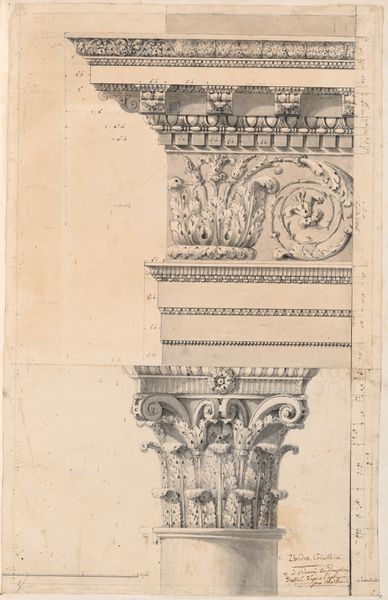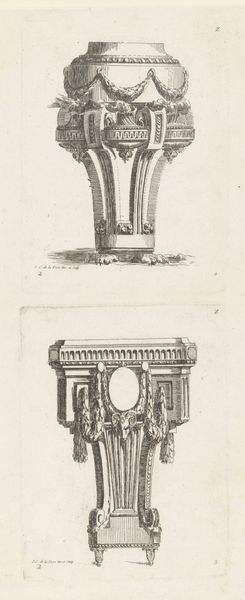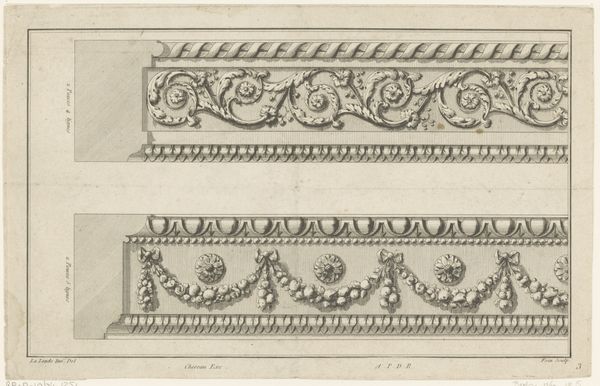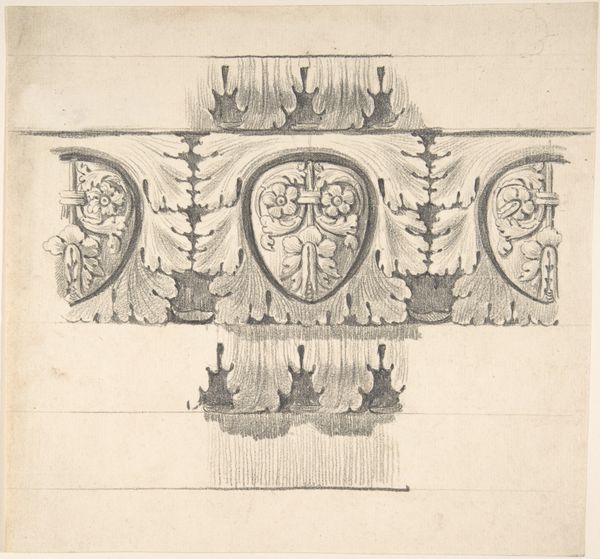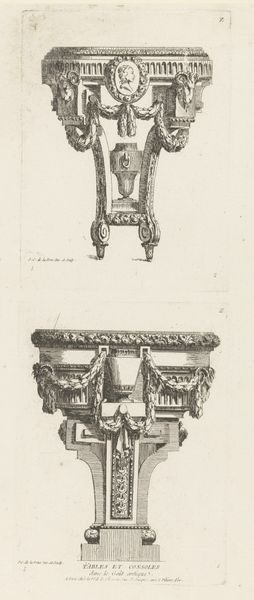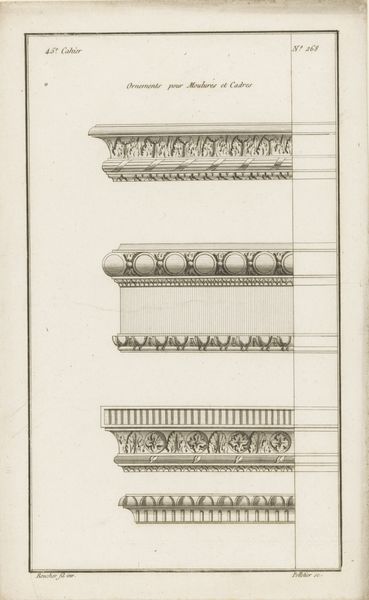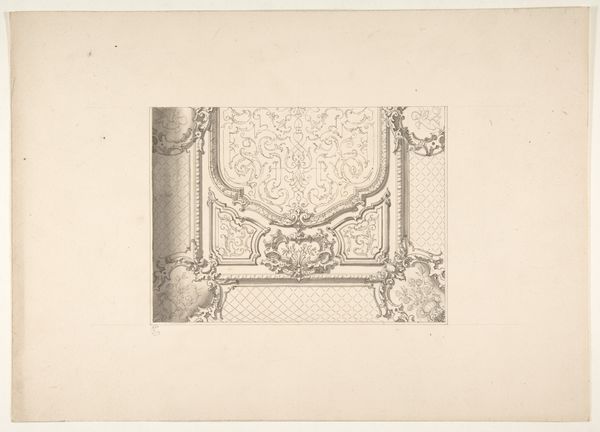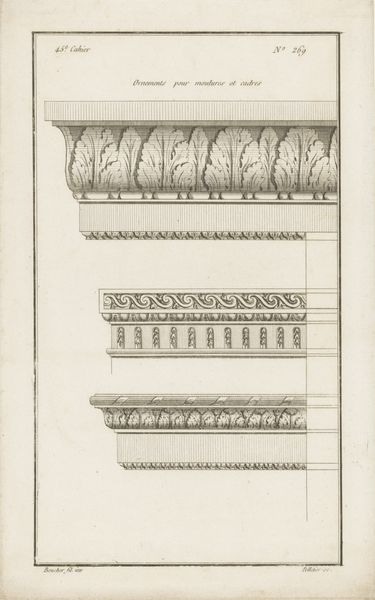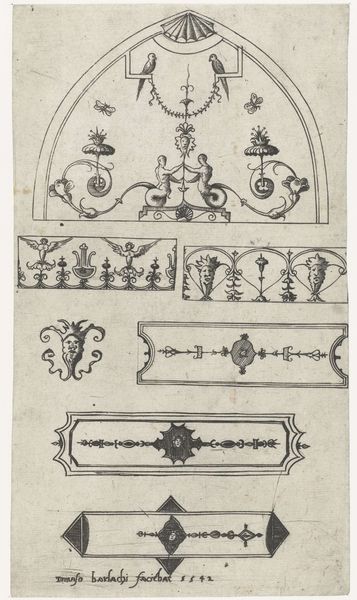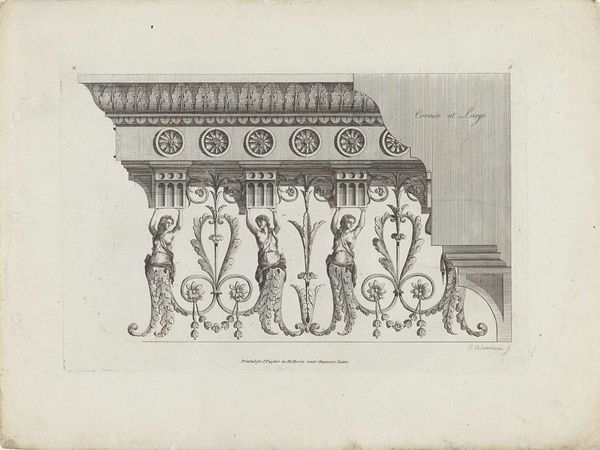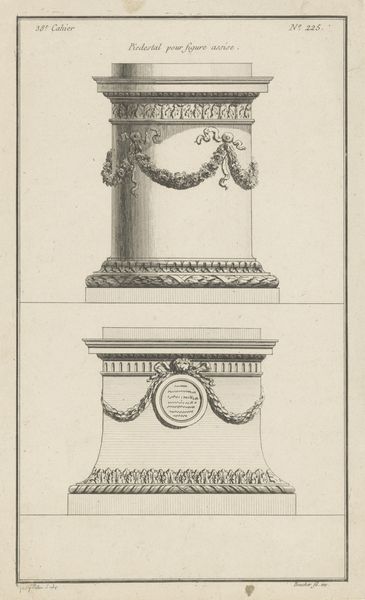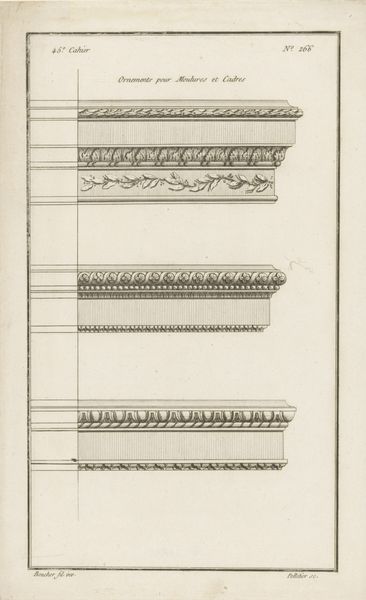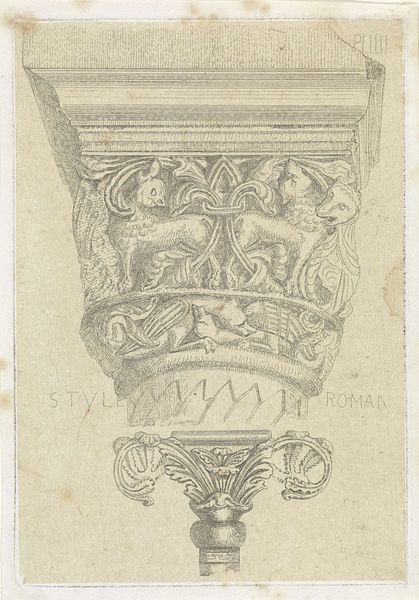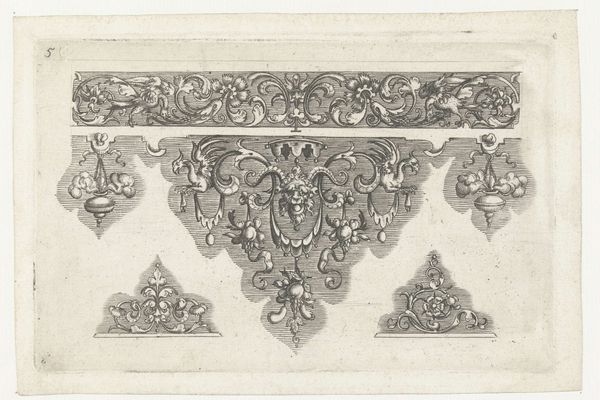
print, etching, engraving, architecture
#
baroque
# print
#
etching
#
geometric
#
history-painting
#
engraving
#
architecture
Dimensions: height 212 mm, width 296 mm
Copyright: Rijks Museum: Open Domain
Editor: Here we have "Friezen en een kapiteel op de Romeinse triomfboog in Orange," from around 1637-1640, by Jean Beuf. It’s an etching and engraving. I find the detail incredible – look at the layers of ornamentation. What's the significance of capturing architectural details like this, would you say? Curator: It's about preserving and communicating a visual language. Beuf is documenting, but he’s also channeling the Roman Empire. Notice the frieze. It's not just decoration; it depicts soldiers, power. Etchings like these circulate and influence design for centuries. This Roman triumphal arch serves as a cultural touchstone; it tells a story, and invites us to remember a powerful past. What feelings does that evoke in you? Editor: A kind of…weight, maybe? Knowing that these images were designed to communicate power and victory and seeing them copied and spread around… Did people see them the same way back then? Curator: Probably with a similar sense of awe and connection to the past. The Baroque period loved to be reminded of classical history and grandeur. This detailed replication spreads awareness of these concepts. The Corinthian capitals and decorative swags aren’t just pretty. The acanthus leaves symbolize enduring life and rebirth, things people have wanted for millennia! The visual cues create a narrative bridge that helps people to both remember the past, and project into the future. Editor: So it’s not just a pretty picture; it's a memory device. I didn't really think about the continuity before. Curator: Precisely! It shows how art can encapsulate time and memory in symbolic forms. Hopefully it is a tool you can use from now on to unlock more artwork. Editor: Thanks, that's a perspective I'll definitely carry forward.
Comments
No comments
Be the first to comment and join the conversation on the ultimate creative platform.
